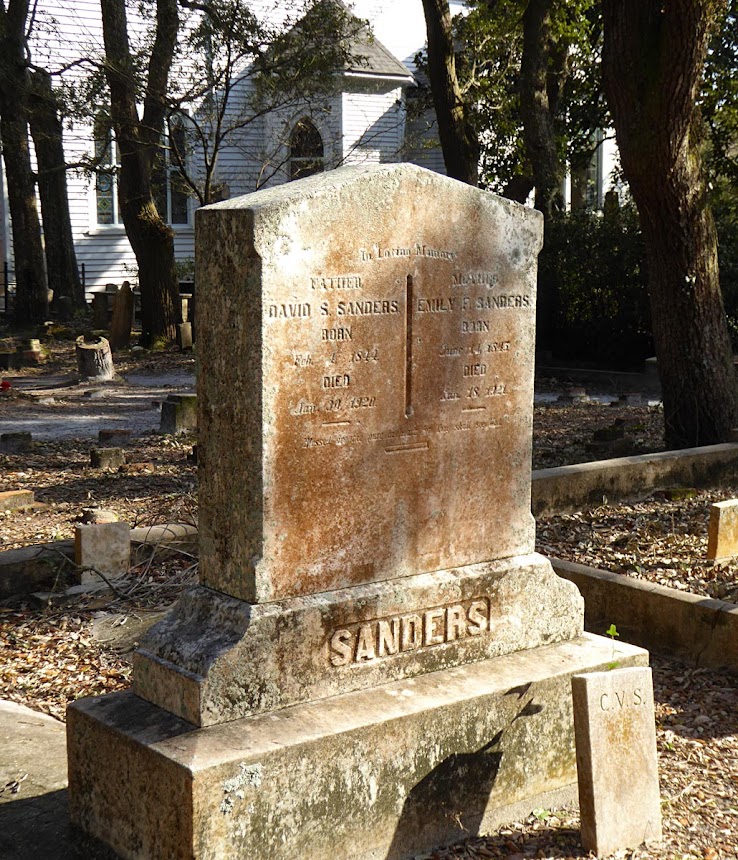There are three churches on the block where the Old Burying Ground in Beaufort is located. The biggest but not oldest one is the Ann Street Methodist Church, which was built in 1854. That's about the time that the European-Americans in the congregation at Purvis Chapel split off from the African-Americans in the congregation. The European-Americans built themselves a new church, below. The third is a more modern Baptist church, built of brick.
In coastal areas of the U.S., graves are frequently built in the style below. The brickwork keeps soil from washing away around the graves when there are heavy rains or flooding.
Most North American cemeteries are wide fields of manicured grass, but not the old burying ground in Beaufort, where there are many trees, including a large number of huge live oaks, growing among the 500 or more old graves.
Because the cemetery is so shaded by big trees, many graves are covered by moss. Lichens grow everywhere, as do ivy and shrubs. The soil is sandy.
The oldest grave that still has a legible stone marker in the Old Burying Ground dates back to 1756, but there are many earlier graves that are no longer marked.
That's because there was no stone in this region of marshes,
swamps, and dunes that could be used in making tombstones. They had to
be imported by ship, which made them far too expensive for most families.
Many graves had wooden markers, made from local cypress, but those haven't
survived over the centuries.
In my post yesterday, I showed the marker on a common grave where crew members of the Crissie Wright, a Philadelphia schooner that ran aground in ocean surf near Beaufort in January 1886, were buried. It was so cold the night of the shipwreck that most of the crew members, who had lashed themselves to the boat's rigging to prevent being washed overboard, froze to death. Some were lost in the sea. Only one out of the eight or nine on board survived. Afterward, a U.S. Coast Guard life-saving station was established on the barrier island at Cape Lookout.








It is very inteesting cementary and in a nice setting. Definitely style of graves is completely different from European ones,.
ReplyDeleteIt's really another world over there, in so many ways.
DeleteKen, I didn't know about that style of building surrounds of brick around the grave area. I've never seen that before. Have you seen it in many other coastal cemeteries, in states other than NC?
ReplyDeleteJudy, you might want to read this blog post about Beaufort's old cemetery.
ReplyDeleteThose graves are interesting. I've seen pictures of the raised graves in places like New Orleans, but the Beaufort ones seem quite unique.
ReplyDeleteI've always found the old burying grounds informative as well as interesting, and they do engender a sense of humility at how temporary we all are.